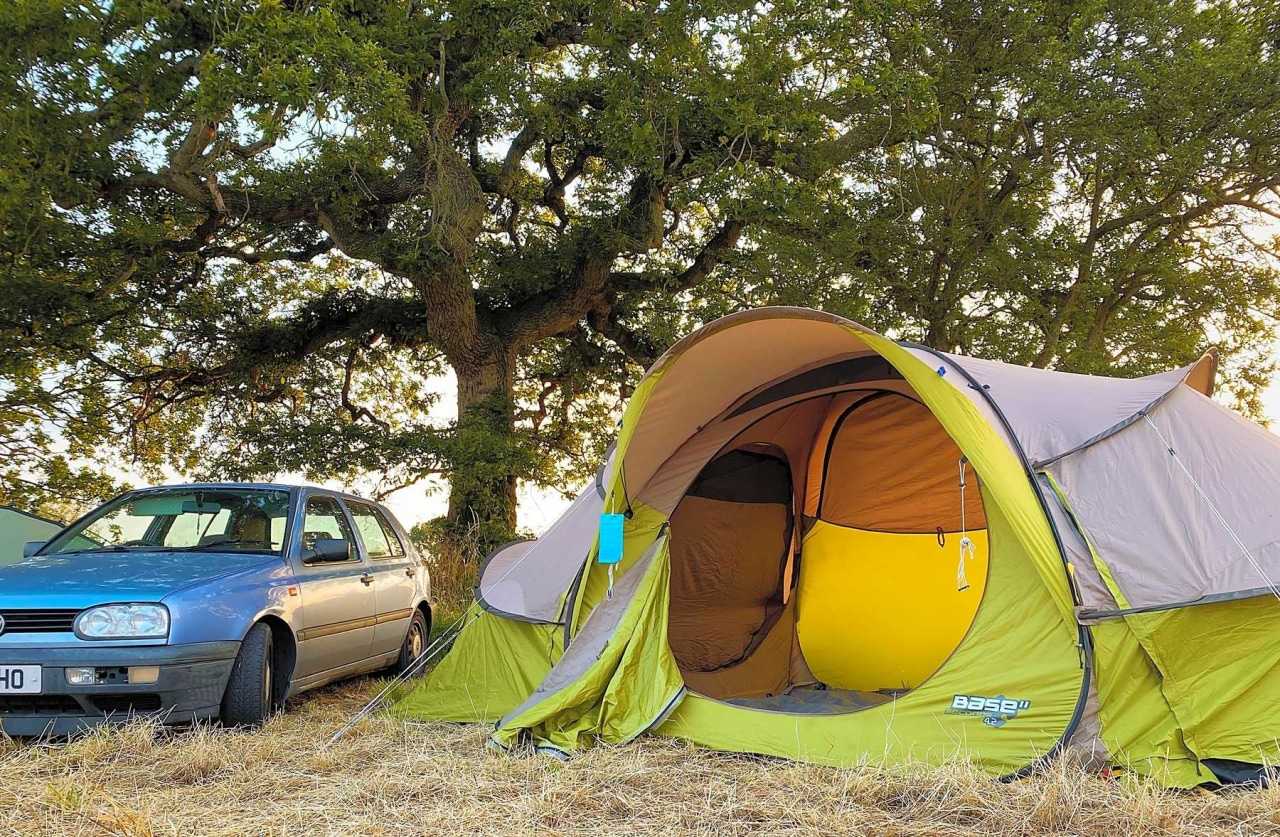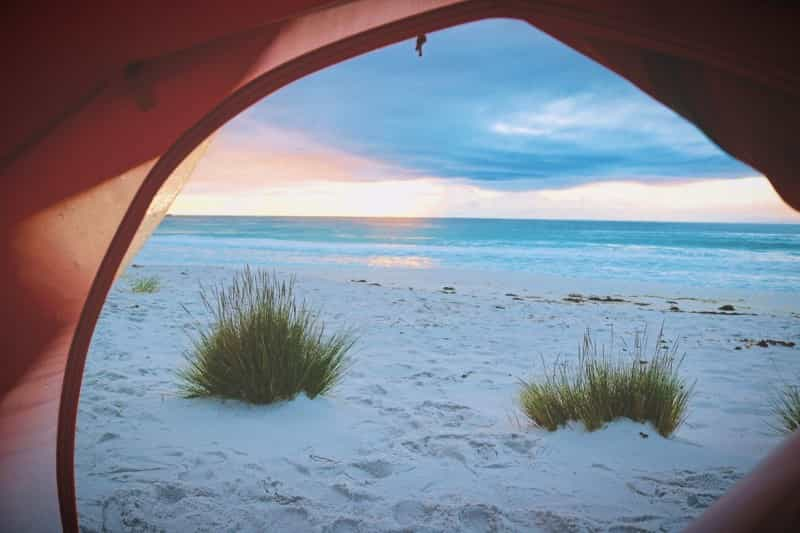What to look for in a pop-up tent
Cheap, quick to set up and easy to transport, pop-up tents have a broad fan base. From first-time summer campers to festival-goers or families looking for a pup tent for the kids, pop-up tents are great for a wide range of camping trips. Learn what to consider before buying one, and decide whether a pop-up tent is right for your needs with this short guide.

What is a pop-up tent?
The thing that really sets pop-up tents apart from conventional tents is the fact that they have built-in poles that do not have to be assembled and disassembled each time you pitch the tent or take it down. These poles are generally made of fibreglass, so are bendy enough to be packed away into a small bag. To open a pop-up tent, simply take the tent out of the bag, throw it into the air and watch the poles snap into place.
There’s a wide range of pop-up tents on the market today, but many of them share the following features:
-
Pop-up tents usually come in a flat disc-shaped carry bag.
-
Pop-up tents typically do not come with a fly sheet that needs to be attached separately.
-
Although assembling the essential structure takes seconds, there will almost always be guy ropes to help you secure the tent to the ground. You’ll still need to bring some camping pegs too.
-
Most pop-up tents are in a dome design – although it is also increasingly possible to find A-frame pop-up tents too.
-
Most pop-up tents are single-skin (i.e., made of one layer of fabric), but it is also possible to find some double-skin models.
Where and when to use a pop-up tent
-
Festivals are good for pop-up tents, as you’ll probably want the focus to be on socialising and the music rather than pitching your tent.
-
Pop-up tents may work well for wild camping, when you don’t have the luxury of staying on the same pitch for a few nights and want to set up camp quickly just before sunset (although you might want to have a back-up option in case the weather turns).
-
Pop-up tents make great pup tents to pitch alongside a caravan, motorhome or main tent.
-
Pop-up tents are great for the beach, where they can provide sun protection and somewhere to snooze.

Pop-up tent pros and cons
Pros:
-
Pop-up tents can be assembled in seconds.
-
This easy assembly process makes pop-up tents great for kids, inexperienced campers and people with conditions such as arthritis who don’t want to be fiddling with poles.
-
Pop-up tents are generally very cheap, making them affordable for first-time campers.
-
Pop-up tents are available in a wide range of styles, sizes and colours.
-
The lack of metal poles means that pop-up tents are generally fairly lightweight.
-
Pop-up tents are very portable once pitched – just taking out the pegs will allow you to move the whole tent without taking it down.
-
It’s possible to buy specialist pop-up tents, including UV-resistant pop-up tents and blackout pop-up tents.
Cons:
-
Pop-up tents work best in summer weather conditions. Wind, rain and snow can all cause problems, as the fibreglass poles and lightweight materials mean that these tents tend not to be the sturdiest.
-
Although most pop-up tents are waterproof to a degree, it’s worth being realistic about how much one or two layers of polyester can keep you dry in heavy rain.
-
Pop-up tents are prone to condensation because of their use of non-breathable lightweight fabrics such as polyester. This lack of breathability means that pop-up tents may have problems with condensation and can get hot and stuffy in the summer.
-
Pop-up tents rarely come with a porch where you can store your boots.
-
Because they are so compact, it is difficult to find a pop-up tent where adults can stand up inside.
-
Pop-up tents are rarely as easy to fold away as they are to pitch. A practice run in your garden is definitely advised.
What to consider when buying a pop-up tent
-
Ventilation can sometimes be an issue with pop-up tents, so try and find a model with good air vents or windows that can be opened and closed with ease.
-
Check out what different fabrics are available, as cheaper models may tear with heavy use.
-
Pop-up tents tend to be smaller than conventional tents of the same berth size, so your two-man pop-up tent might feel like a one-man regular tent. Bear this in mind while shopping.
-
What are the dimensions of the tent when not in use? Some tents fold down into smaller carry cases than others. If you’re likely to be carrying it over long distances, you might also want to check out the weight.

Pop-up tent FAQs
How much do pop-up tents cost?
As with all tents, there are high-end and cheaper options available. The cheapest options cost around £20 or less, while the very best pop-up tents retail at over £100.
Why do some people not like pop-up tents?
Pop-up tents are great for many people, but their reputation has taken a hit over recent years because of the high numbers abandoned at campsites and music festivals. Although they’re typically not the most durable tents, pop-up tents are not single-use and can be reused plenty of times over their lifespan if looked after correctly.
Are pop-up tents waterproof?
Although most pop-up tents are waterproof to a degree, their design and the materials used mean that they are rarely the best at keeping out the rain.
How do I put up a pop-up tent?
To open a pop-up tent, simply take the tent out of the bag, throw it into the air and watch the poles snap into place.
Where can I use a pop-up tent?
Pretty much anywhere, but it helps if you have good weather. Pop-up tents are particularly recommended for trips to the beach, music festivals and short summer camping trips.